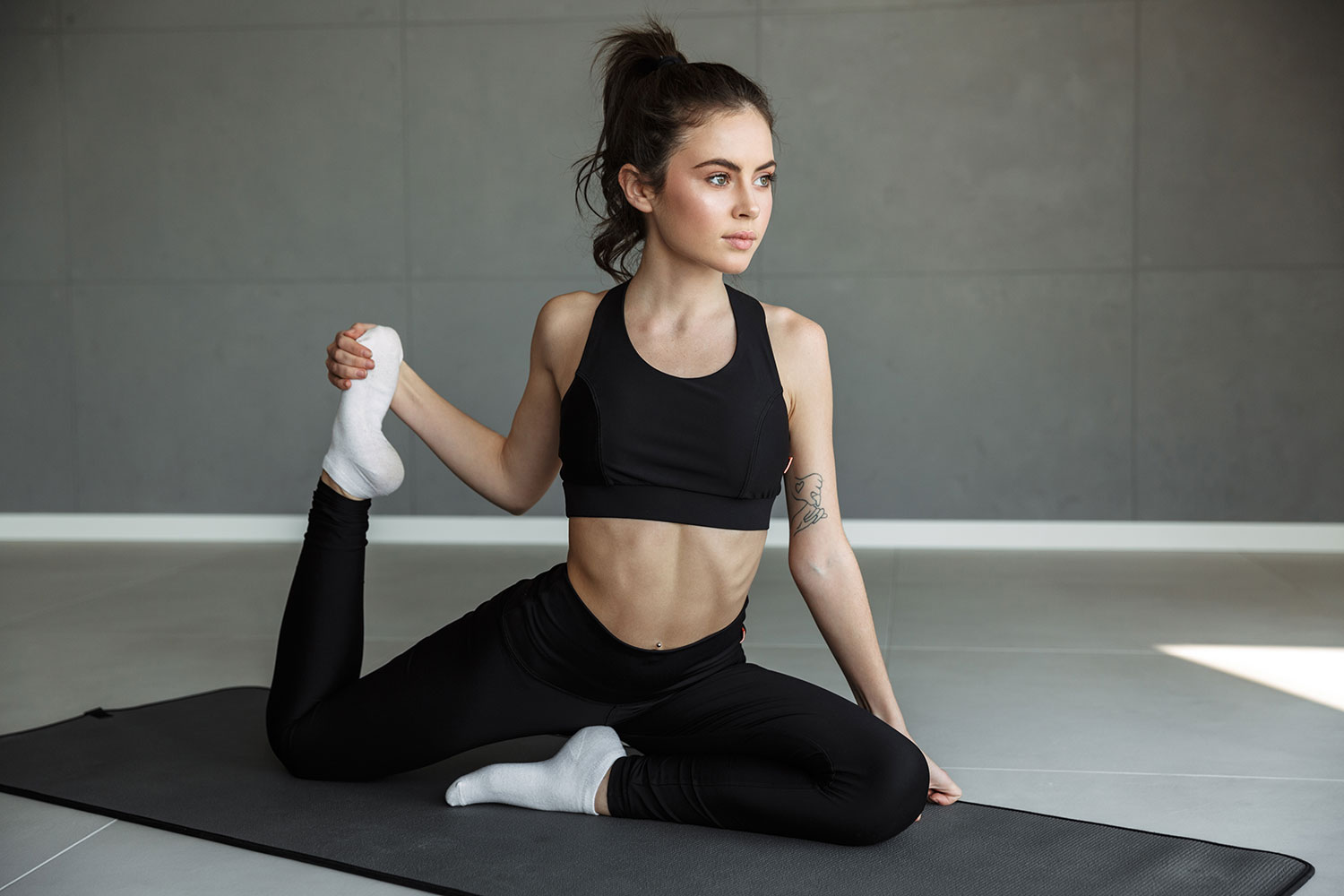
Having been a teacher’s assistant at over 50 yoga teacher…
The psoas is a muscle commonly restricted in the general population, particularly in those who spend a lot of time sitting. The psoas is a short hip flexor, meaning that it only affects hip mobility. This is in comparison to the quadriceps, which extend the knee in addition to flexing the hip.
The psoas originates on the lower thoracic spine as well as the lumbar spine, and inserts into the femur. Its muscle action is to flex the hip. For example if you pull the knee into your chest, the psoas is helping create this movement at the hip. Because of its relationship with the spine, stretching the psoas is important when addressing lower back pain and keeping your spine mobile.
While they both can flex the hip, the quadriceps and hip flexors should be distinguished in a flexibility routine. Because the psoas only crosses the hip joint, it cannot be stretched the same way as the quadriceps. The quadriceps can be stretched by bending (flexing) the knee. To fully address the psoas, special attention must be focused on extending the hip (the movement of the hip when you are standing and lift your leg behind you).
Here are 15 yoga postures that you can work into your home practice to address psoas muscle length:
Pavanamuktasana – Wind Release Pose with a Block Under Sacrum Pose
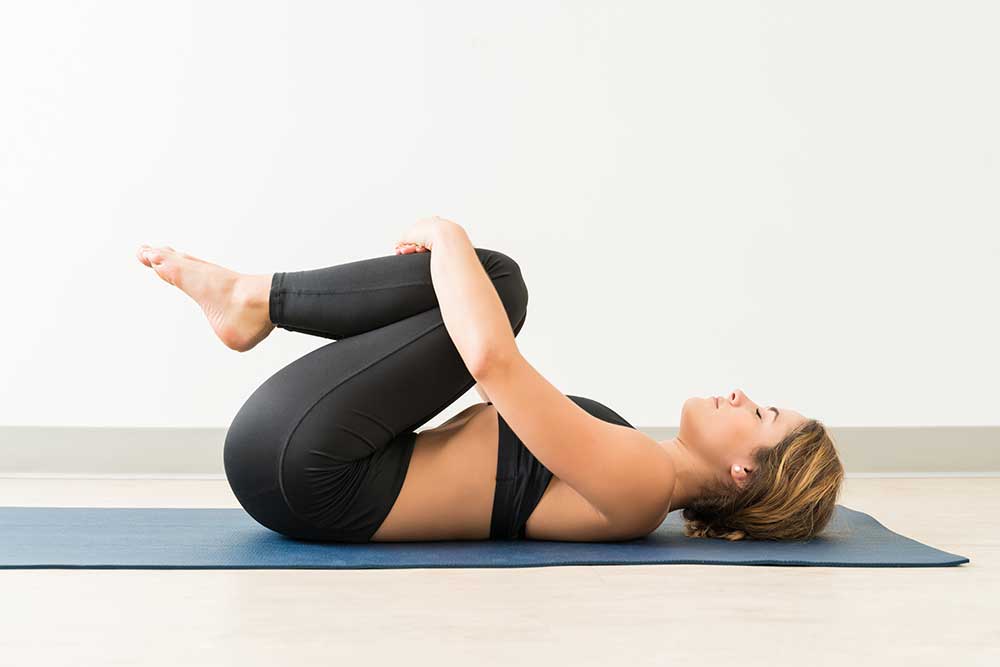
In this posture, to focus on the psoas, draw attention to the straight leg. Lie on your back with a block on the low setting placed under your sacrum. Draw the left knee into your chest, and straighten out the right leg. Keep the right leg in line with the right hip and pull your toes back towards your shin.
Make sure your right toes are pointing straight to the sky (they have a tendency to point over to the right in this position), and keep your abdomen engaged. Create an action where you are pressing your right heel towards the top of the mat as you actively pull the left knee to your chest. You should feel this posture across the front of the right leg. Avoid any pain in the lumbar spine. Repeat on both sides.
Half Virasana – Half Supine Hero’s Pose
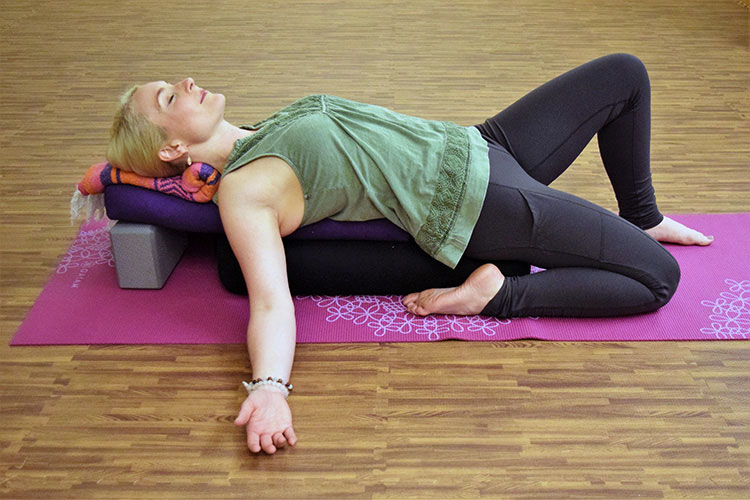
Begin sitting with the knees bent, then tuck the right leg so your heel is in line with the hip. Start with keeping the left knee bent in the starting position. If you feel like you can move deeper, you can lengthen out the left leg straight. To move further, you can start leaning your torso back towards the floor. Keep the abdomen engaged, and ensure that the right knee is in line with your respective hip. For more psoas emphasis, focus on pressing the front of your hips up to the sky. You should feel this posture across the front of the right hip. Avoid any pain in the patellar tendon or lower back. Perform on both sides.
Full Virasana – Hero’s Pose
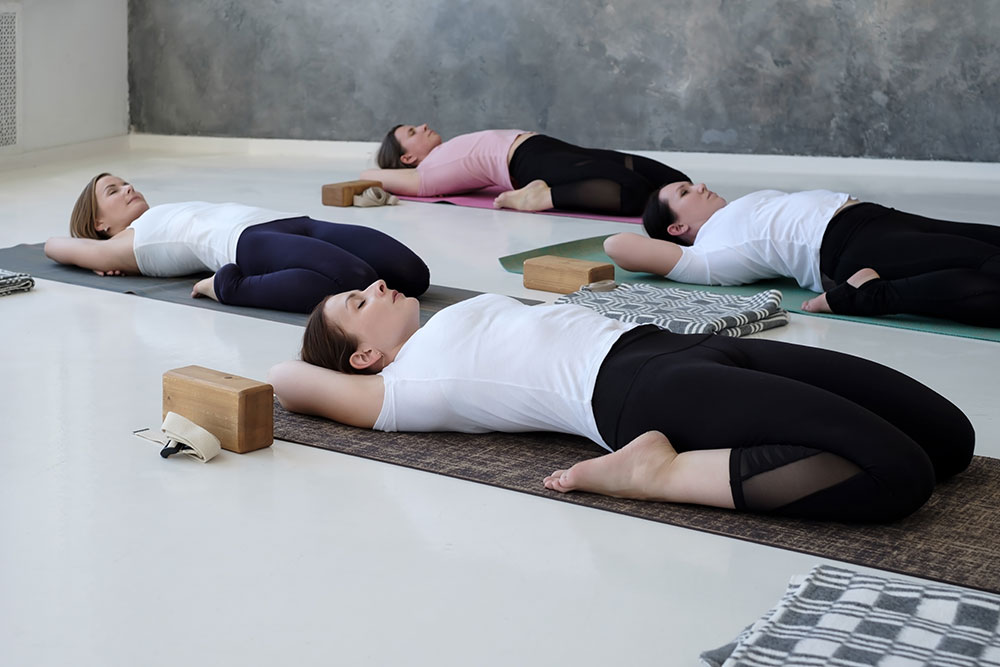
For those who can move a little deeper into their flexibility than half virasana, to address both hip flexors at the same time, try full virasana. Start sitting, then bend both knees and tuck the heels back in line with the hips. Keep both knees in line with their respective hips (the tendency is for the knees to splay out to the sides), and keep the abdomen engaged. Start sitting upright, then if you can move deeper, start lowering yourself down to your back. For more psoas emphasis, focus on pressing the front of the hips up to the sky as you lean backward. You should feel this across the front of both hips. Avoid any pain in the patellar tendon or lower back.
Bhujangasana – Cobra Pose
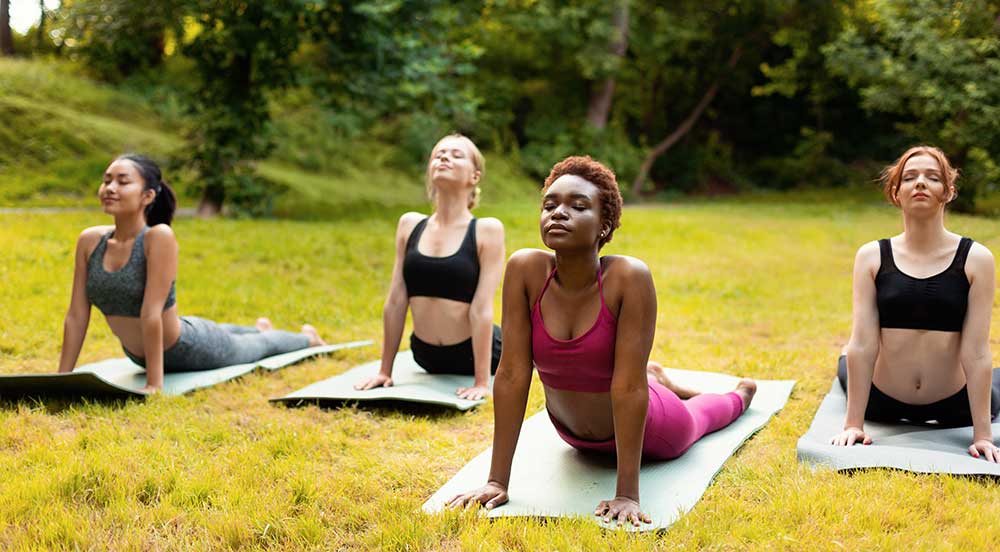
Lie on your stomach and place your palms in line with your lower rib cage. Keep the abdomen engaged and your lumbar spine neutral as you roll your upper body off the ground. Keep your elbows tucked tight by your sides, and the shoulders relaxed. Create an action in your palms as though you were sliding the body forward. Focus on feeling an opening across the front of your hips vs a compression at your lumbar spine. Avoid any pain in your lower back.
Utthan Pristhasana – Side Lying Quadriceps Stretch
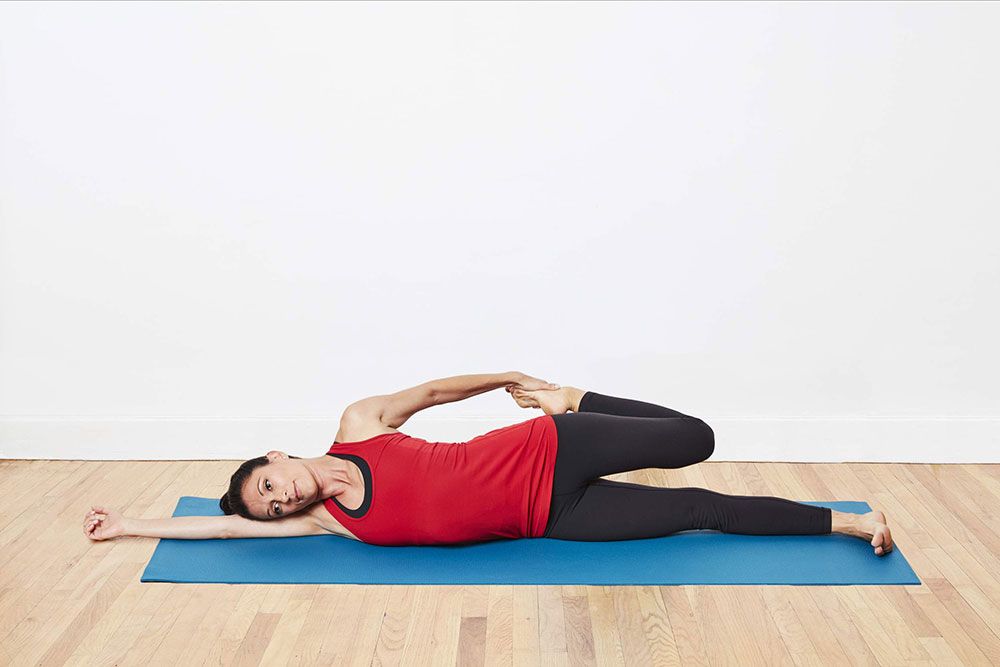
Move onto your right side. You can rest your head on a pillow, or prop it up on the right palm. The right knee can be bent for more support if needed. Engage the abdomen, and lift the left leg up off the ground. Bend the left knee and grab onto the foot with your left hand. Focus on pressing the left hip forward as you bend the knee to bias the psoas stretch more. Avoid any pain in the patellar tendon and lower back. Repeat on both sides. You can use a strap around the palm to make the pose more accessible.
Setu Bandha Sarvāṅgāsana – Supported Bridge
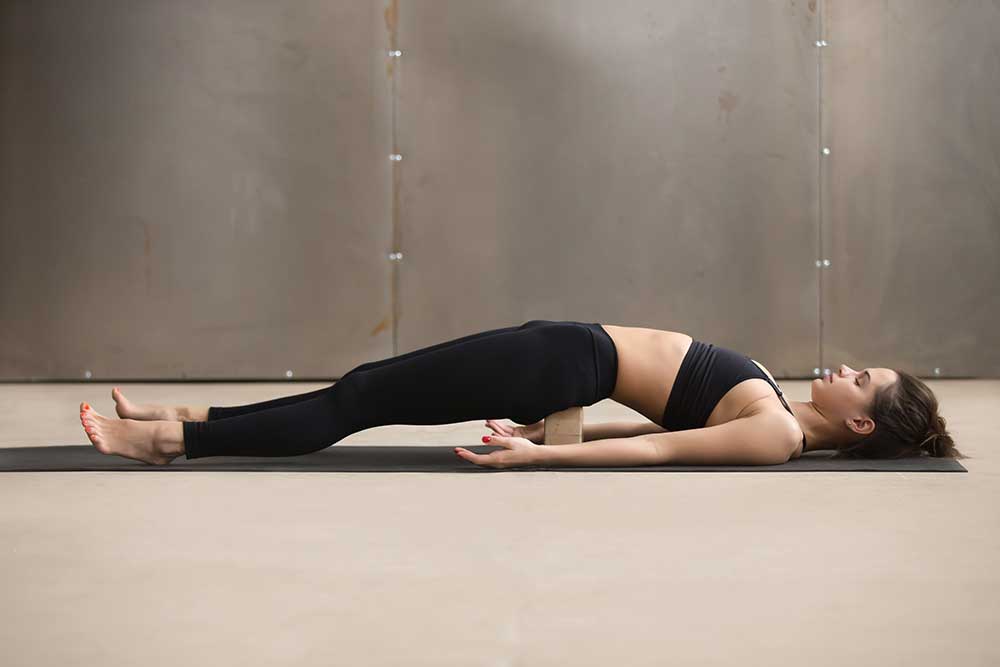
Begin lying on your back with the knees bent, feet hip width apart. Lift then hips and place a block underneath your sacrum. Lower the sacrum onto the block, then relax the arms by your side. You should feel an opening across the front of the hips vs a compression in the lower back. Begin on the low block setting, and if you don’t experience back pain, you can try for the medium or high setting. For a greater stretch, you can also straighten the legs out. Bend the knees or reduce the block height if you feel back discomfort.
Natarajasana – Dancer’s Pose
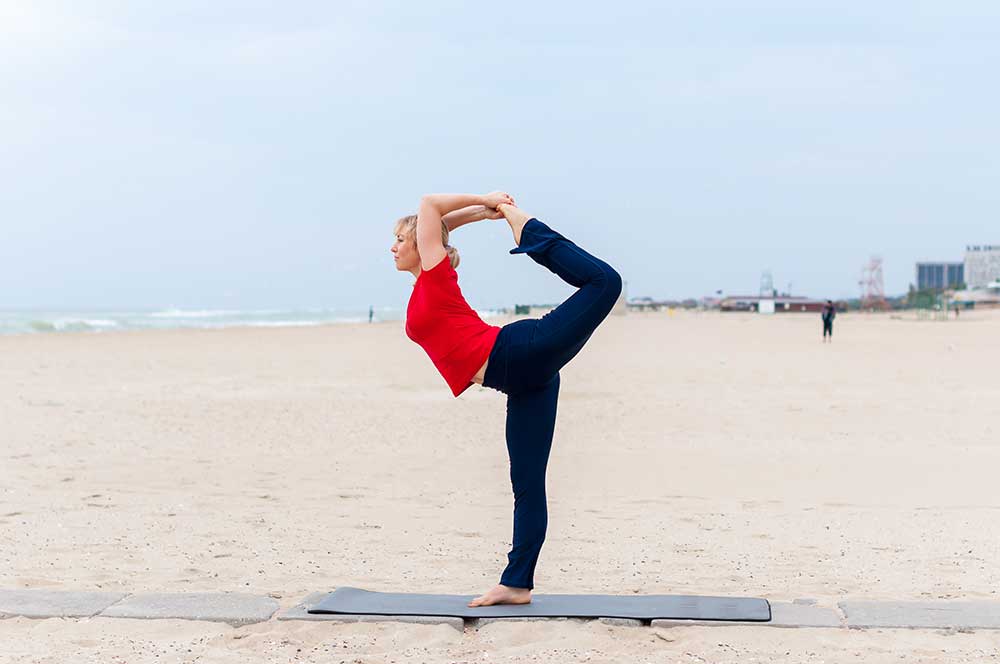
Begin standing. Shift weight into the right foot as you reach the left hand back to grab the inside of the left foot. Keep the shoulders and the hips square, focusing on opening up the front of the left hip. Begin drawing the left knee back behind, keeping the knee in line with the hip you kick the left foot into your palm. Keep the abdomen engaged, and reach the right fingertips forward as you begin to lower the torso parallel to the ground. Avoid any pain in the patellar tendon or lower back. For more balance support, you can keep the right fingertips on a chair or a wall. Repeat on both sides.
Ardha Chandra Chapasana – Half Moon with a Bind Pose
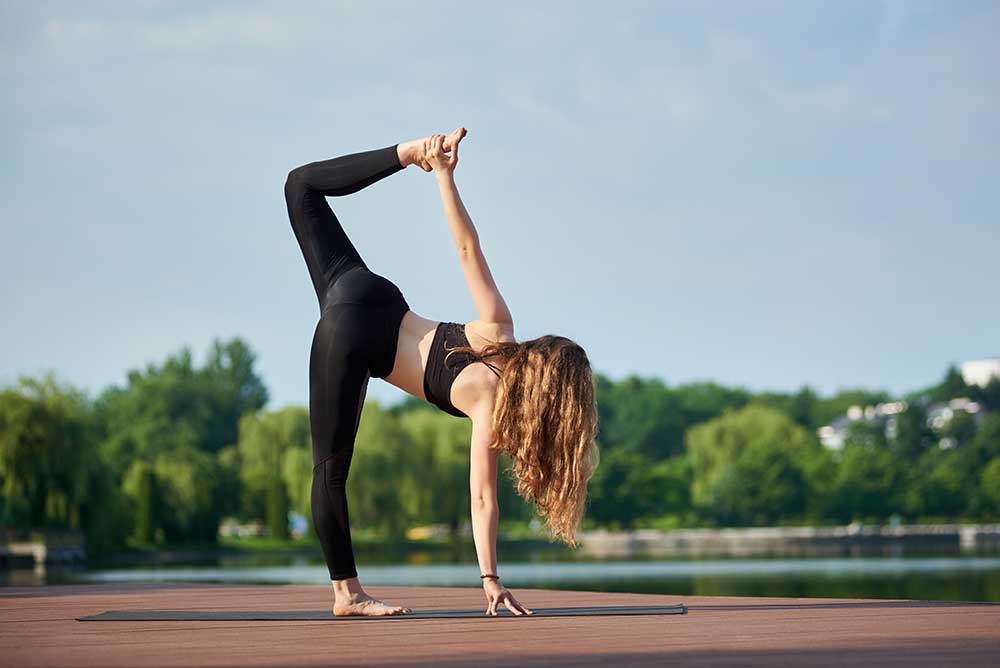
Begin standing. Forward fold, then halfway lift to stack the shoulders on top of the wrists. Shift weight into the right leg and hand, and place the left hand on your hip. Open the body up so you stack the left side on top of the right, lifting up the left foot so you are balancing just on your right side. Once you find your balance, reach your left hand back to grab the left foot. Focus on pressing the front of the left hip forward to emphasize the stretch on the left psoas. Place a block under the weight-bearing palm to make the pose more accessible. Repeat on the other side.
Eka Pada Rajakapotasana – King Pigeon Pose
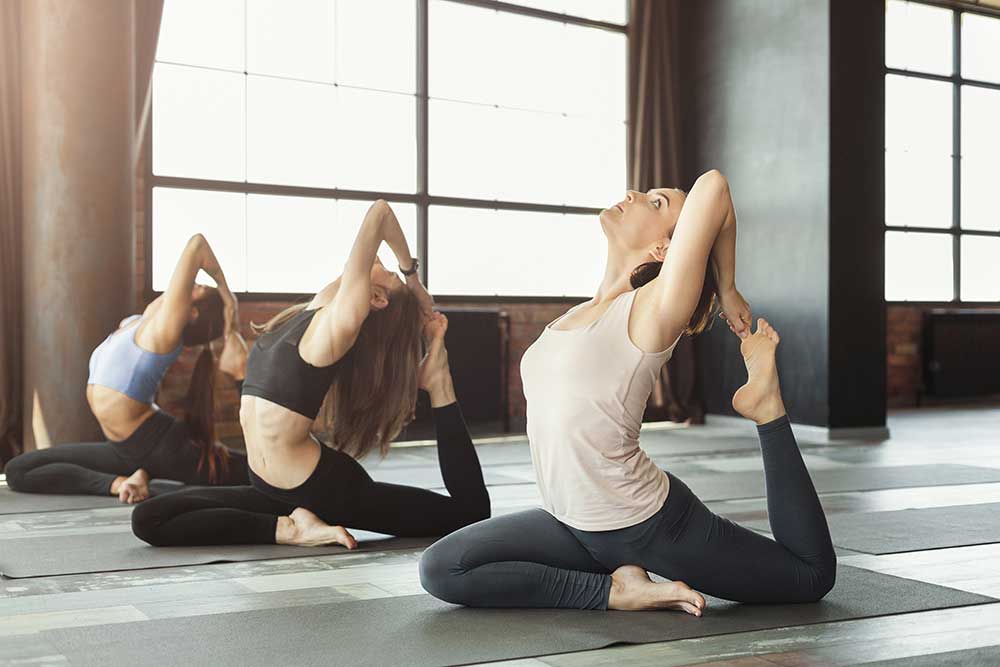
Find half pigeon pose with the right leg forward. Rise up onto your palms, keeping the pigeon shape in the legs. Bend your left knee and reach the hands over your head to catch onto the foot. Once you have the foot, try to square your shoulders and hips, keeping the abdomen engaged so you feel a stretch in the left psoas. Avoid any pain in the lower back and patellar tendon. Repeat on both sides. Use a strap around the foot to make the posture more accessible.
Anjaneyasana – Low Lunge Pose
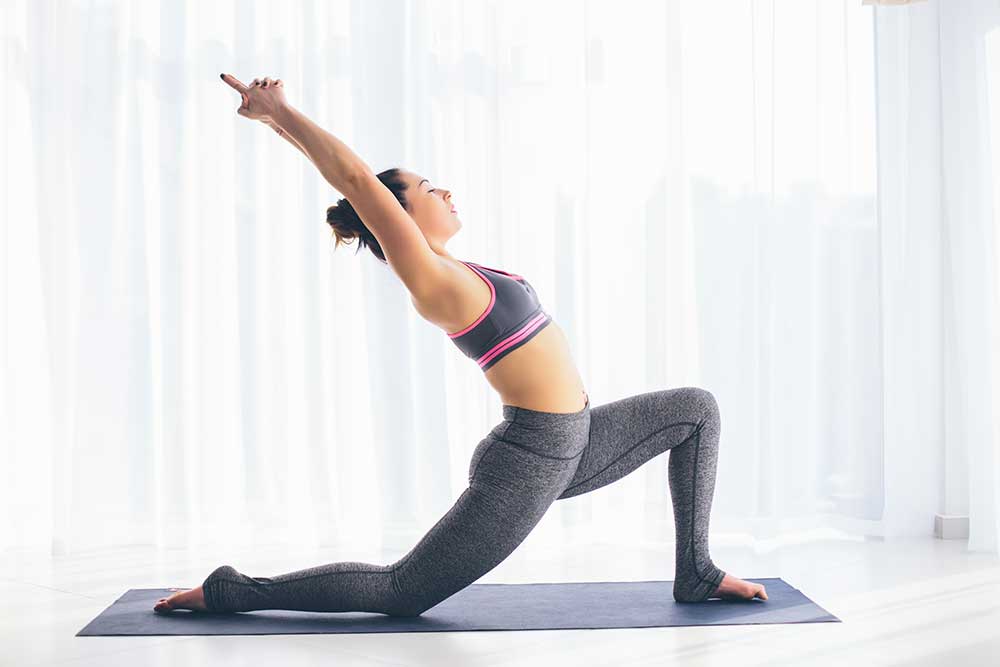
Start kneeling, then step the right leg forward. Walk the left knee back so you are not bearing weight through the patella, then engage the abdomen to create a neutral lumbar spine. Keeping this engagement, begin to sink into the hips to stretch the left psoas. Avoid any pain in the lower back. Repeat on both sides.
Ashta Chandrasana – High Crescent Lunge Pose
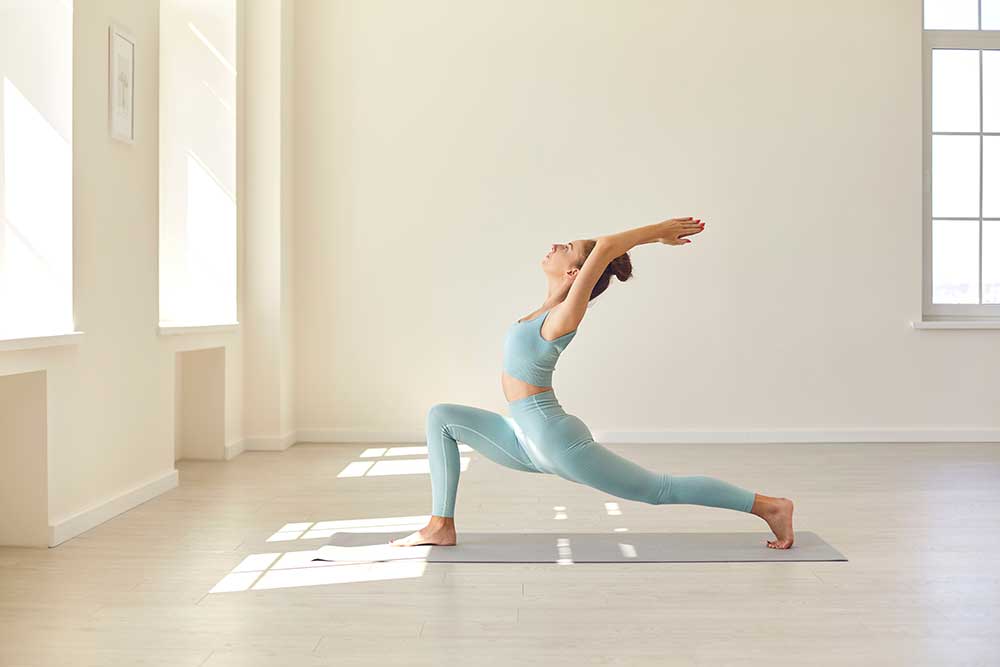
This posture is similar to the one above it, but in this variation, the back knee is lifted off of the ground. Begin standing and take a large step back with the left leg. Keep the left heel stacked high upon the ball mound of the toe and the left leg is straight. Bend into the right knee and stack the right knee on top of the ankle. Sink into the hips and keep the abdomen engaged. Feel a stretch in the left psoas. Avoid any pain in the lower back. Repeat on both sides.
Virabhadrasana I – Warrior 1 Pose
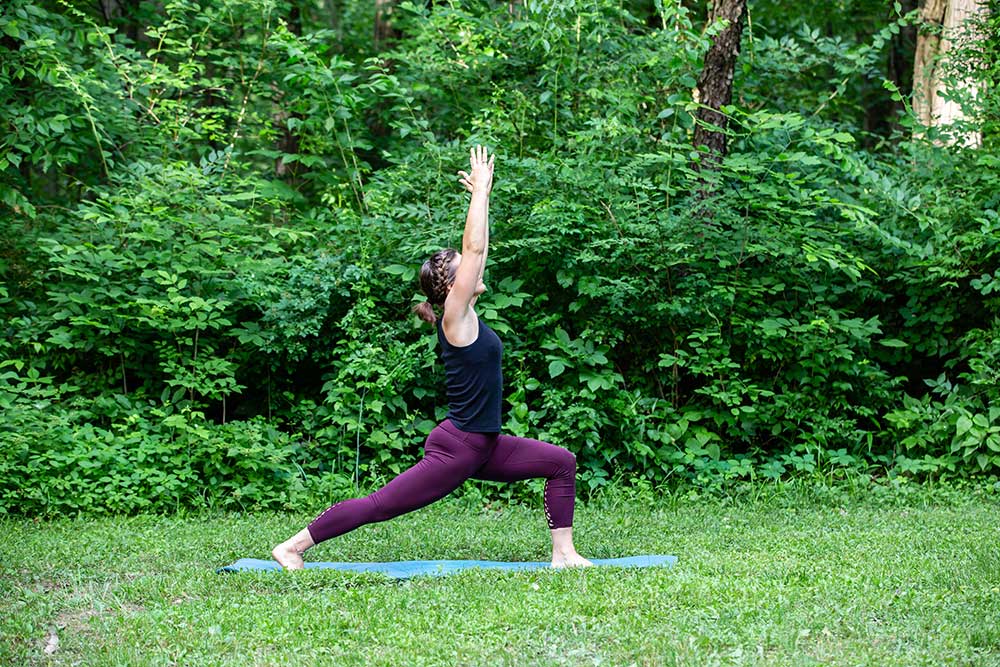
Begin standing, then step the right foot forward. Walk the left foot back and angle it out at 45 degrees. Keep the feet in line with the hips. Bend into the front knee, keeping the back knee straight. Focus on keeping your hips and shoulders square to the top of the mat as you reach your fingertips overhead. Engage the lower belly as you sink into the pose, and feel a stretch at the left psoas. Repeat on both sides.
Utthan Pristhasana – Lizard Pose
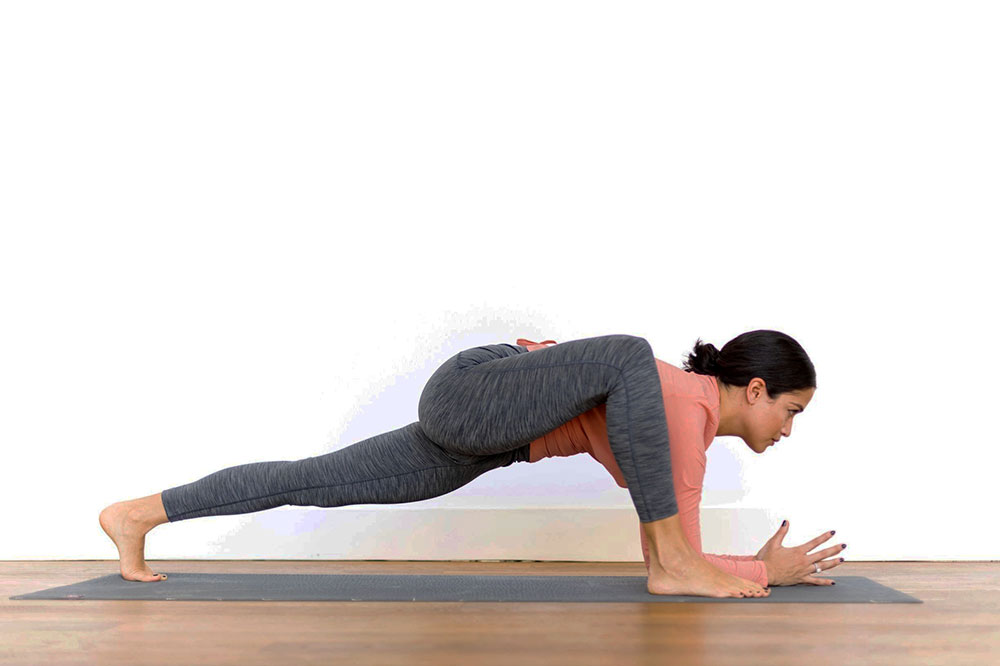
Begin kneeling. Step the right foot forward, and walk the left knee back so you are not bearing weight on the patella. Your hands are placed on the inside of the right foot. Sink into the hips, feeling an opening across the front of the left hip. Keep the abdomen engaged as you perform this posture. Avoid any pain in the lower back. Repeat on both sides.
Ardha Bhekasana – Half Frog Pose
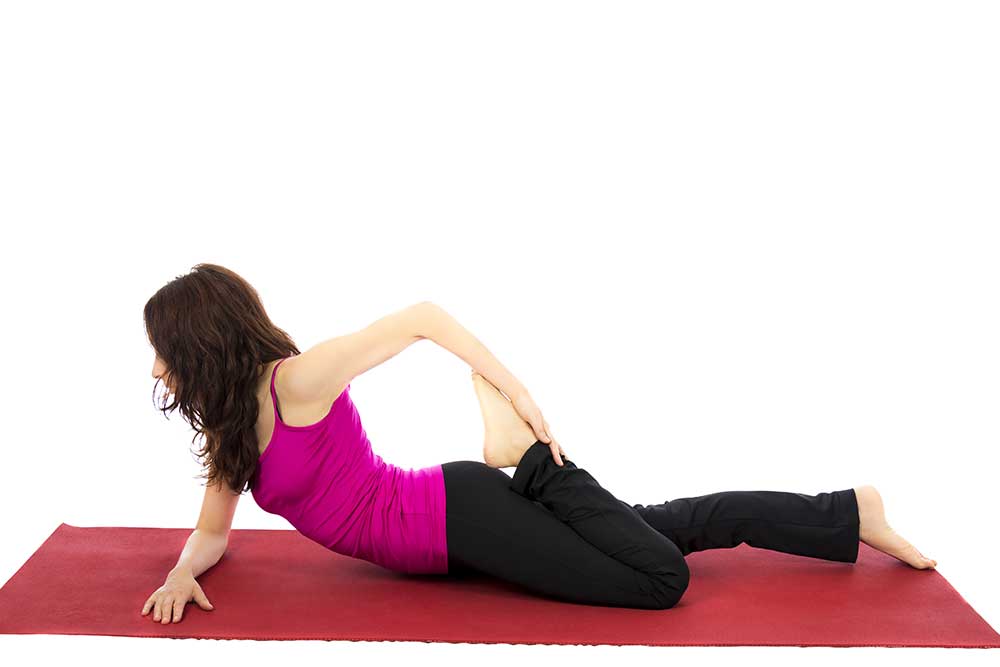
While this posture has quadriceps in the name, the hips are extended so you will address psoas in this pose as well. Start on your belly and rise up to your elbow. Reach back with your left hand to catch the left foot. Make sure that your left knee stays in line with the hip, and that you are keeping your hips and shoulders square. Engage the lower belly to feel an opening across the front of the left psoas. Avoid any pain in the lower back. Repeat on both sides. You can use a strap around the bent knee foot to make the pose more accessible.
Dhanurasana – Bow Pose
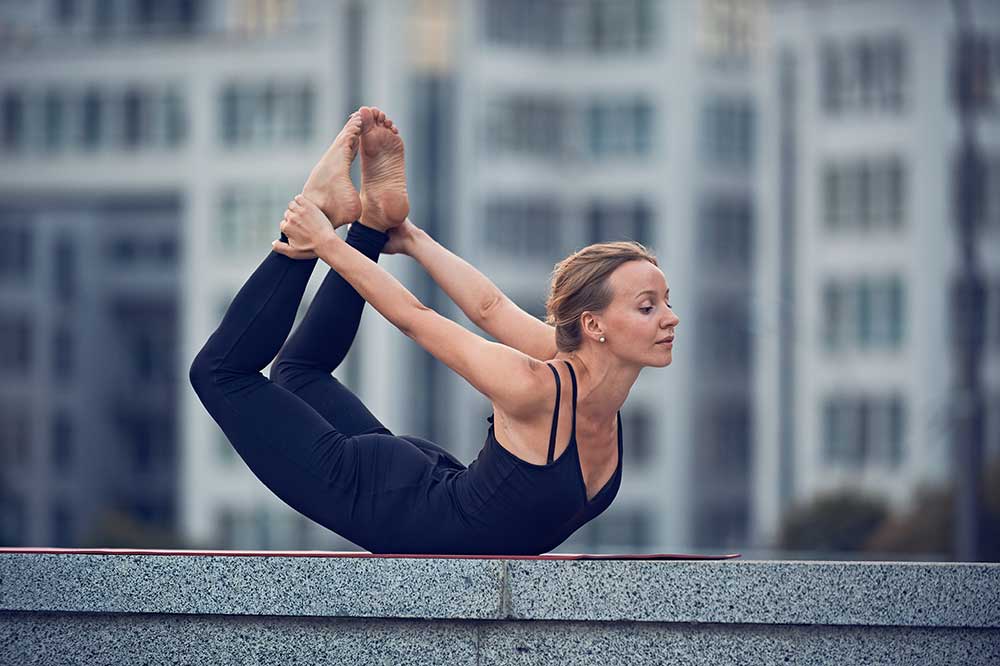
For those of you who can move deeper into your flexibility than the stretch above, try floor bow. Start on your belly and reach back with your hands to catch your feet or ankles. Draw the knees in line with the hips, and relax your shoulders away from the ears. Keep the abdomen engaged as you lift up your knees and chest from the ground, feeling an opening in both psoas. Avoid any pain in the lower back.
Stretching the psoas has many benefits to your yoga practice and your overall wellness. Opening up your psoas will help you safely access backbends and move deeper into these postures without risk of overextending the lumbar spine.
Outside of yoga, opening up your psoas will reduce your back pain with daily tasks. It will also help you gain better access to engaging key muscle groups like the glutes and abdomen, making you stronger in your daily life and sports.
The psoas is an important muscle group not to overlook in your yoga practice. Keep working on the postures above to improve psoas length, and notice the improvements these postures bring into your practice and daily life!
What's Your Reaction?
Having been a teacher’s assistant at over 50 yoga teacher trainings worldwide, Olivia May has a firm grasp on the fine art of yoga and meditation. In her work, she carefully reflects on a vast expanse of knowledge to help others find peace in both body and mind.






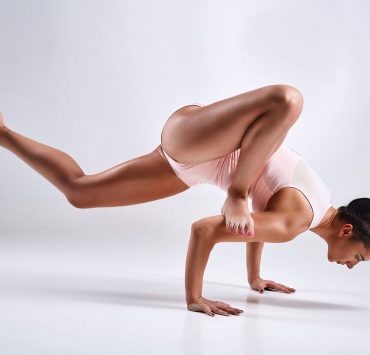
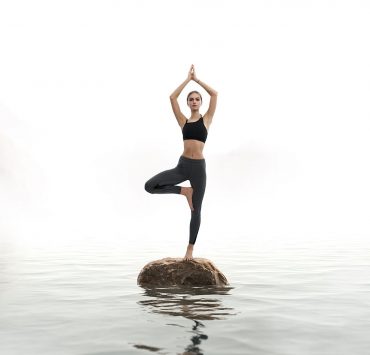



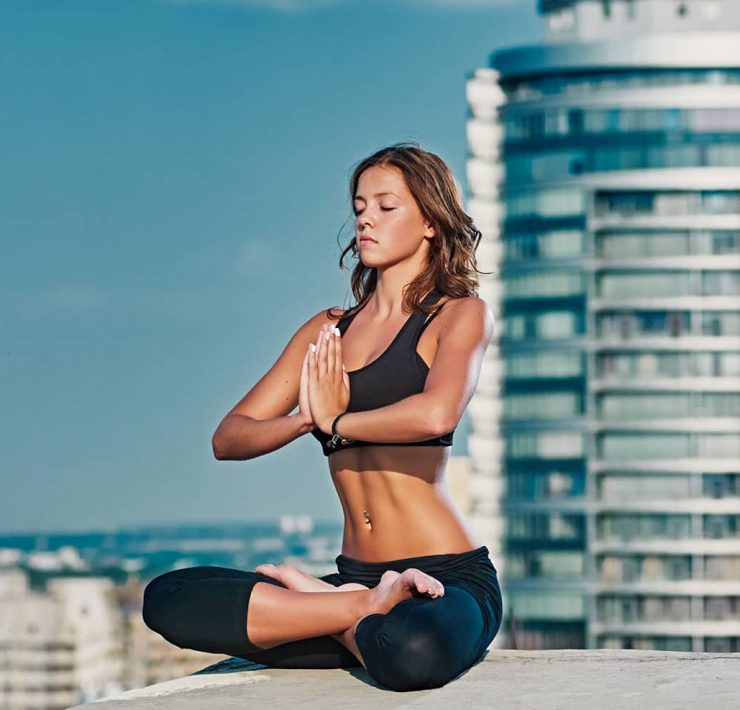



Very interesting points you have noted, appreciate it for posting.